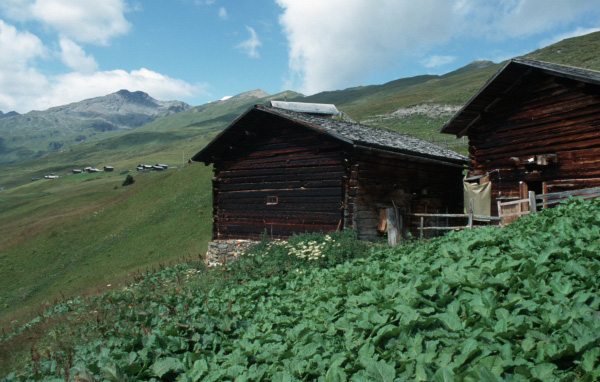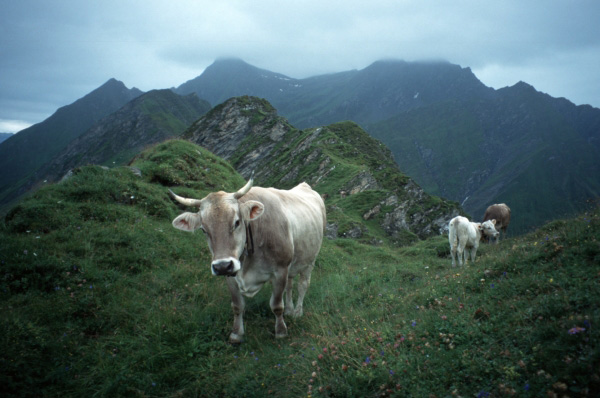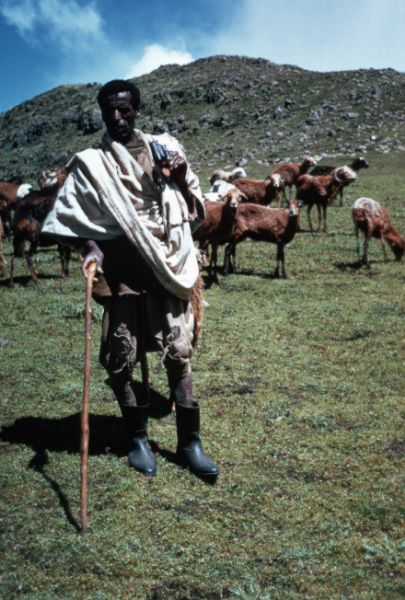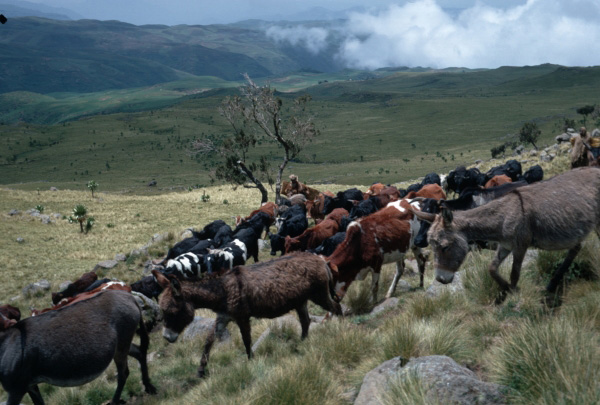|

2 - Monk's rhubarb (Rumex alpinus),
a plant benefitted by agriculture. Photo: P. Vonow (122K) |
Agricultural use first shifts
the natural proportions of food sources and plant occurrence. Pasturage
is increased at the expense of the forest and timberline ecotone. Grazing
of cattle, fertilisation and mowing result in a peculiar plant community
not equivalent to the original one.
On one hand, cattle are a food competitor for other herbivores, but on
the other hand the intensification of grassland (cutting, fertilization)
also brings new food resources for other herbivores. If agriculture were
abandoned in the mountains, a peculiar ecosystem would disappear and biodiversity
would decrease. |
 a a
 b b
3a and b - Cattle are a food competitor for
herbivores even at the highest altitudes. Photo above: L. Hug; bottom:
P. Vonow (134K and 101K) |





